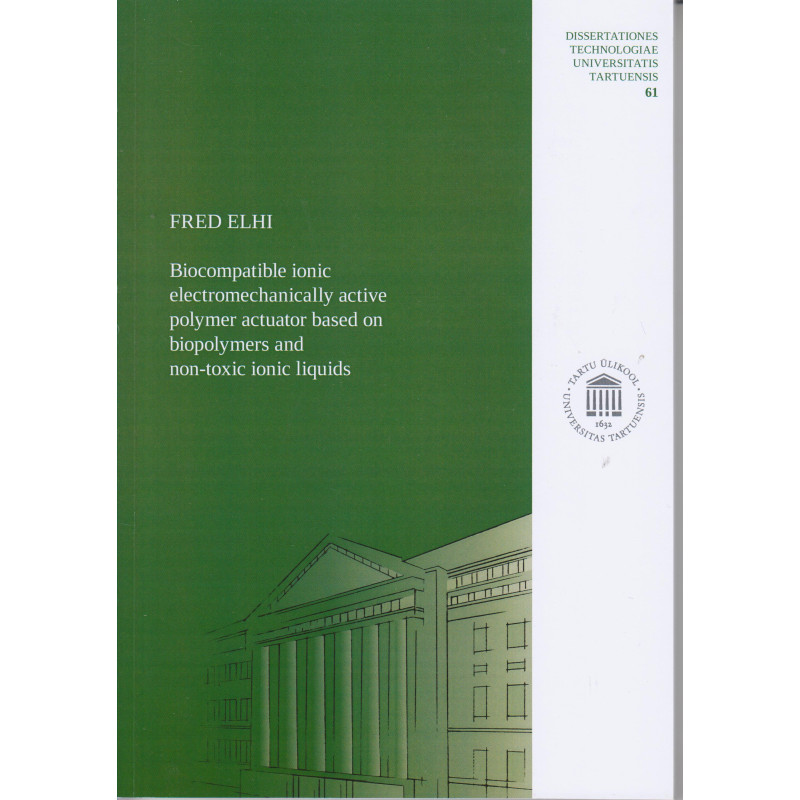



Tartu : University of Tartu Press, 2021
140 p.
Paperback, in very good condition.
Theses(doctorate):
For the conservation of earth, while keeping up the technological progress of humanity, we need to come up with solutions that not only fill a function, but also do not impose a penalty on nature. Soft actuators are useful in biomedical applications because of their low voltage consumption and non-invasive movement. The toxicity of the electrolytes in the material, called ionic liquids, necessary to make the soft polymer actuator move, has limited their applications. One way to overcome this limitation, is to swap the toxic components for choline ionic liquids. This approach would make it possible to achieve a fully functioning biofriendly soft polymer actuator. The biofriendly soft polymer actuator was achieved after the following research steps. First, the individual choline ionic liquids were tested against several bacterial strains and a human cell-line, which are all widely used in toxicology studies. Second, the choline ionic liquids were attempted to be combined into mixtures that have a lower melting point than the individual components. This makes them easy to use in low temperature environments. The fully biofriendly soft polymer actuator was finally achieved by combining the biofriendly components and thoroughly testing its electromechanical and toxicological properties. The synthesized choline ionic liquids were all harmless towards the selected test organisms. Moreover, the main factor influencing the toxicity, was the change in feeding solution pH. By mixing the choline ionic liquids five two-component mixtures were identified that have a lower melting point than their individual components. The amount of melting point depression depended on the molecular shape of the individual components. Lastly, the biofriendly soft polymer actuator outperformed the comparison made from more widely used soft polymer actuator materials. It was also confirmed that the biofriendly actuator as a whole was suitable for contact with living organisms.
Series: Dissertationes technologiae Universitatis Tartuensis ; 61. Summary in Estonian